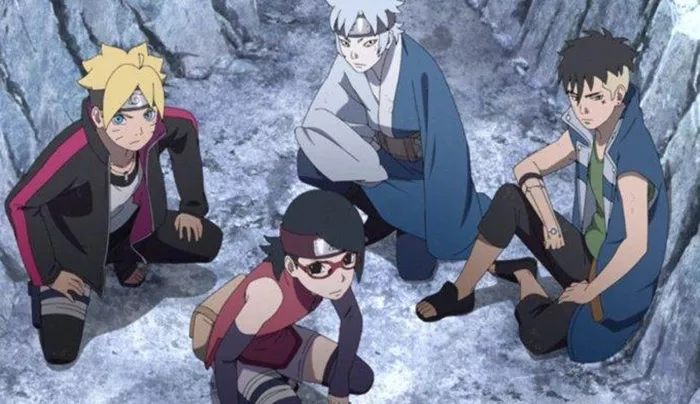Boruto: Naruto Next Generations is a popular anime and manga series that continues the story of the ninja world after Naruto Uzumaki’s generation. One of the important storytelling devices used in the series is the timeskip. A timeskip is a jump forward in time that allows the story to move past certain events and show characters at a more advanced stage in their lives and abilities. In Boruto, the timeskip plays a crucial role in shaping the story, characters, and their development.
This article will explain what the timeskip in Boruto is, why it was used, what changes it brings to the story, and how it affects the main characters like Boruto Uzumaki and Kawaki. The explanation is simple and clear, making it easy for fans and newcomers to understand this important part of the series.
What Is a Timeskip?
A timeskip in anime and manga is a narrative tool that skips over a period of time in the story. Instead of showing every event in detail, the story jumps forward, often by several years. This helps the creators avoid slow pacing and allows them to present characters who have grown older, stronger, and more mature.
In Boruto, the timeskip covers a period of about three years. When the story resumes after the timeskip, Boruto and other characters are older teenagers, with new skills and challenges. This jump forward helps the story connect with the future scenes shown at the very start of the series.
Why Was the Timeskip Used in Boruto?
The timeskip was introduced for several reasons:
To Show Character Growth: Boruto and his friends start as young ninjas with limited skills. The timeskip allows the story to show them as more powerful and mature, ready to face bigger threats.
To Connect to the Future Timeline: The series begins with a flash-forward scene where Boruto and Kawaki fight on a destroyed Konoha village. The timeskip helps bridge the gap between that future and the present story.
To Refresh the Story: After many episodes focusing on training and small missions, the timeskip brings new energy and excitement by introducing serious conflicts and stronger enemies.
To Align with Manga Progress: The manga also uses the timeskip to advance the plot and prepare for major battles and story arcs.
How Long Is the Timeskip in Boruto?
The timeskip in Boruto lasts about three years. At the start of the series, Boruto is around 12 years old. After the timeskip, he is about 15 or 16 years old. This period allows him to train, learn new techniques, and gain experience.
During this time, many changes happen off-screen, including Boruto’s growth as a ninja, his relationship with Kawaki, and the rise of new threats like the Otsutsuki clan’s creations. The timeskip is a way to show that much has happened without showing every detail.
What Changes After the Timeskip?
Boruto’s Growth and New Abilities
After the timeskip, Boruto is much stronger and more skilled. He has learned new jutsu and fighting styles, including:
New Rasengan Variants: Boruto develops new versions of the Rasengan, his signature technique, making it more powerful and versatile.
Flying Thunder God Technique: He masters this space-time ninjutsu, allowing him to teleport instantly, a skill taught by Sasuke Uchiha.
Swordsmanship: Boruto becomes a skilled swordsman, using a katana similar to Sasuke’s.
Improved Chakra Control: His control over chakra is much better, allowing him to fight efficiently and conserve energy.
Kawaki’s Role and Development
Kawaki, introduced before the timeskip, becomes a central character after it. He and Boruto have a complicated relationship, sometimes rivals, sometimes allies. Kawaki’s powers and connection to the Kara organization bring new challenges to the story.
After the timeskip, Kawaki’s character design changes to show his growth. He also gains new abilities and plays a key role in the upcoming battles against powerful enemies.
Changes in Other Characters
Other characters like Sarada Uchiha and Mitsuki also show new designs and skills after the timeskip. Sarada’s new look and outfit hint at her growing strength and leadership potential. Mitsuki continues to develop his unique abilities.
How Does the Timeskip Affect the Story?
The timeskip shifts the tone of Boruto from a light-hearted ninja academy story to a more serious and intense saga. The peace of the Hidden Leaf Village is threatened by powerful enemies, and Boruto and his friends must rise to protect their home.
The timeskip also brings the story closer to the future conflict hinted at in the opening scenes, where Boruto and Kawaki face off in a ruined Konoha. This creates suspense and anticipation for fans, as they want to know how the story reaches that point.
Why Is the Timeskip Important for Fans?
For fans, the timeskip is exciting because it:
- Shows beloved characters growing up and becoming stronger.
- Introduces new and more dangerous enemies.
- Builds toward major battles and story climaxes.
- Connects the present story with the future scenes already shown.
It also allows the creators to explore new themes, such as redemption, rivalry, and the consequences of power.
Conclusion
The timeskip in Boruto is a three-year jump forward that transforms the story and characters. It allows Boruto and his friends to mature, develop new skills, and face greater threats. The timeskip connects the current story to the future glimpsed at the series’ start, creating a bridge between past, present, and future events.
By using the timeskip, the series keeps the story fresh and exciting, preparing fans for the epic battles and emotional moments ahead. Understanding the timeskip helps viewers appreciate the growth of Boruto and the challenges he must overcome to protect his world.
Related topics:
- Who will Boruto Ends Up With?
- Which Team Is Boruto In? Complete Guide to Team 7
- When Was Boruto Born? Official Birth Date Explained


